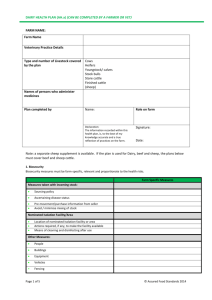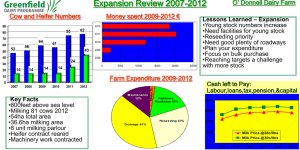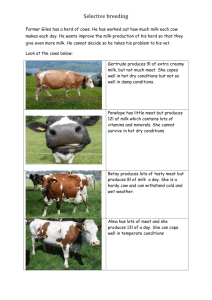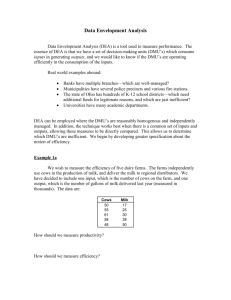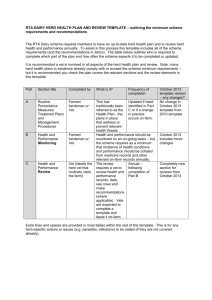AH.a Health Plan (Dairy) (WORD)
advertisement
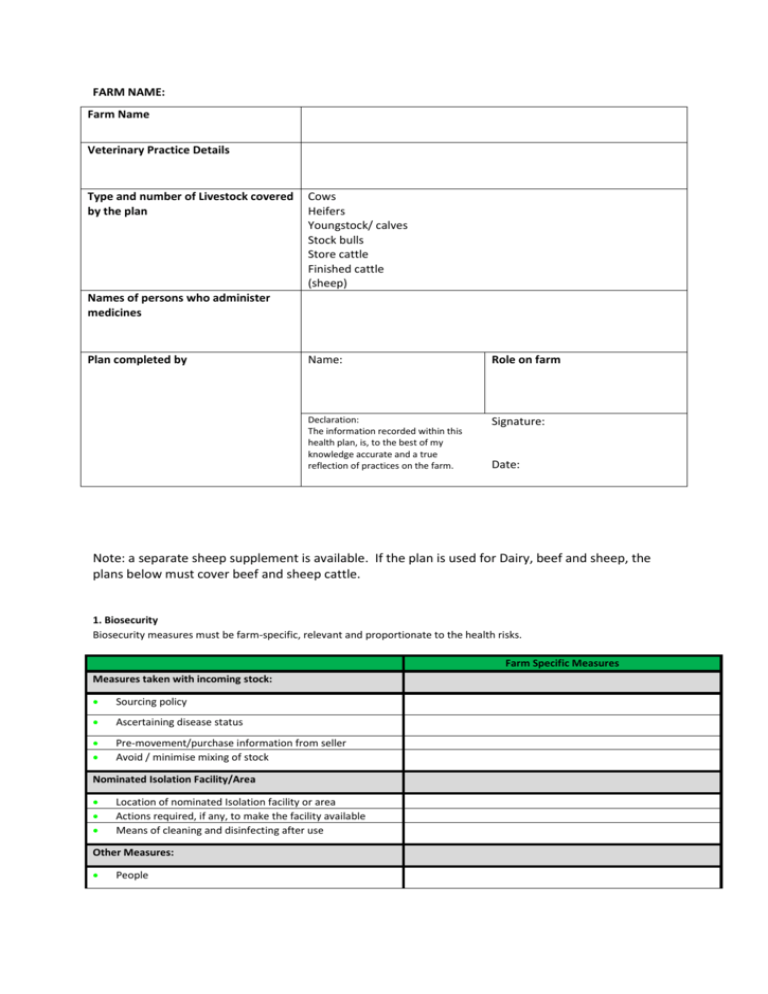
FARM NAME: Farm Name Veterinary Practice Details Type and number of Livestock covered by the plan Cows Heifers Youngstock/ calves Stock bulls Store cattle Finished cattle (sheep) Names of persons who administer medicines Plan completed by Name: Role on farm Declaration: The information recorded within this health plan, is, to the best of my knowledge accurate and a true reflection of practices on the farm. Signature: Date: Note: a separate sheep supplement is available. If the plan is used for Dairy, beef and sheep, the plans below must cover beef and sheep cattle. 1. Biosecurity Biosecurity measures must be farm-specific, relevant and proportionate to the health risks. Farm Specific Measures Measures taken with incoming stock: Sourcing policy Ascertaining disease status Pre-movement/purchase information from seller Avoid / minimise mixing of stock Nominated Isolation Facility/Area Location of nominated Isolation facility or area Actions required, if any, to make the facility available Means of cleaning and disinfecting after use Other Measures: People Buildings Equipment Vehicles Fencing 2. Infectious Disease and Vaccinations Disease Status* Control Measure / Vaccine Target Animals Timing Johnes Leptospirosis BVD IBR TB Use the blank rows to indicate other conditions that are relevant to the farm (eg calf pneumonia, salmonella, husk, ringworm) Status: F - free, U - currently unknown, action required, V - vaccinated, T - being tested, M- being monitored, P present, N - no action 3. Parasite Control Parasite Control Measure / Product Target Animals Fluke Lungworm Intestinal Worms Lice Flies Ticks Use the blank rows to include any other parasites that are relevant to the farm 4. Footcare Name of persons with responsibility for footcare Experience/ Qualifications Timing Routine Measures taken for Prevention, Control and Treatment of Foot Problems (e.g. examination, trimming, footbathing) Condition Measure When / How Often / Products Used Who Control: Digital dermatitis Treatment: Sole Ulcers Control: Treatment: Foul in the foot Control: Treatment: White line disease Control: Treatment: Control: Treatment: Use the blank rows to include other conditions that are relevant to the farm. 5. Mastitis Describe method (s) of detection: Routine preventative measures Pre-dipping Post-dipping Cluster Spraying Cubicle Management Used? Yes/ No Yes/ No Yes/ No Yes/ No Actions taken in treatment of clinical mastitis cases: Condition Measures Taken Products used Products Used Withdrawal Period (milk and meat) Milk Meat Milk Meat Milk Meat Please indicate details for any specific conditions being tackled. 6. Management of Drying Off Procedures for drying off cows: Group Measures Taken Products Used Withdrawal Period (milk and meat) Milk Meat Milk Meat Please indicate if different actions are taken for different groups (e.g. high SCC cows) 7. Metabolic Disorders Condition Preventative Measures Measure Taken If Affected Products Used Hypomagnesaemia (Staggers) Milk fever Ketosis Displaced abomasums Use the blank rows to include other conditions that are relevant to the farm. 8. Young Animal Management and Husbandry Procedures Colostrum Measures taken to ensure newborn animals receive adequate colostrum: Type and age of Task Person* stock Disbudding Dehorning Castration Removal of supernumary teats Use the blank rows to include other routine operations supplied to the herd. Method Anaesthetic Persons undertaking veterinary related tasks must be suitable, experienced and/or trained, details of which must be recorded in Training Records. 9. Identifying Treated Animals Describe the means used for identification: 10. Actions for Dealing with Confirmed TB Reactors in the Milking Herd A suggested policy is provided below – if necessary, amend with any additional or farm-specific actions: Isolate confirmed reactor animal(s) as soon as diagnosed by the veterinary surgeon pending their removal from the farm. Clearly identify reactor animals (e.g. with marker spray, tail tapes). Milk reactor animals last and thoroughly clean equipment after use. Discard milk from reactors completely - exclude from bulk tank and do not feed to calves. If disposing of milk via direct land spreading, apply a grazing interval - minimum 6 months recommended. Other actions taken: 11. Actions taken with Downer Cows 12. Euthansia/ on-farm killing Document the methods used and names of who carries out euthanasia. Animal Type Youngstock Method Used Person who carries it out Adult stock Methods of Disposal: 2.5 Other Disease and Management Problems Condition Prevention/Treatment Measures (including products used and withdrawal periods)
